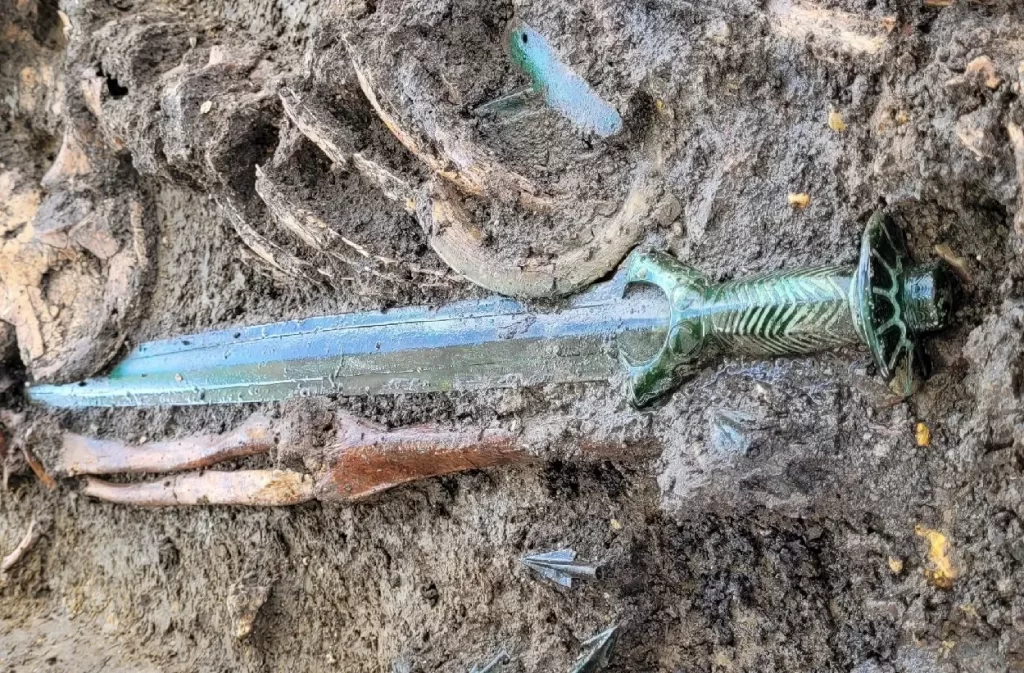At a prehistoric burial site in the town of Nordlingen, German archaeologists unearthed an astounding discovery. Experts were astounded by the gleaming condition of a Bronze Age blade that was discovered last week and is thought to be roughly 3,000 years old.
Researchers have been amazed by the sword’s extraordinary preservation, which was discovered with the bones of three people—a man, a woman, and a youngster. The weapon’s characteristic zig-zag pattern, which is embellished with studs and rivets, is still clearly evident despite the passing of millennia.
Mathias Pfeil, the head of the Bavarian State Office for the Preservation of Monuments, expressed his excitement about the find, remarking that further examination is needed to classify the sword and burial properly. However, he emphasized that the level of preservation exhibited by the sword is exceedingly rare.
During the late Bronze Age, the region encompassing southern Germany, north Germany, and Denmark was known as a hub for trading swords like this one. The swords found in Nordlingen were often associated with the “Urns,” a culture characterized by its practice of cremation.
The Urnfield culture, originating in northern Italy and Eastern Europe, spread to various countries including Germany and Ukraine. This period saw the proliferation of warlike behavior, culminating in the Tumulus Culture era, which witnessed significant advancements in bronze weaponry and armor.
While the origins of this particular sword remain unknown, experts speculate that it may have been crafted by wandering craftsmen or imported from elsewhere. Future investigations hope to shed light on its precise source.
Interestingly, a 3,000-year-old toddler’s shoe discovered recently in a riverbed in North Kent follows closely on the heels of another significant archaeological find. These extraordinary artifacts continue to capture the interest of archaeologists and history enthusiasts all around the world and serve as poignant reminders of the lengthy and intricate history of human civilisation.

